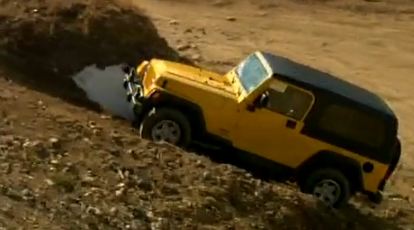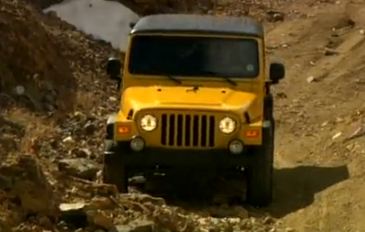PART TWO: 2012 Jeep Wrangler – Tips and Techniques for Off-Roading
- June 18, 2012
- Dealership Ohio
- Posted by LukeS
- Comments Off on PART TWO: 2012 Jeep Wrangler – Tips and Techniques for Off-Roading
PART TWO
Here are some more tips and techniques to keep in mind when off-roading in your Jeep. It can be fun and thrilling, but different terrains require different driving techniques. Keep these tips in mind and stay safe!
Hills
One of the first things to remember when driving on hills is to go straight up or down. Make sure to never drive up or down a hill at an angle because it may cause you to slide or roll the vehicle. When approaching the base of the hill, use more power and let up on the power as you draw near the top, before reaching the top. If you find that you have stalled when driving up a hill, put your vehicle in reverse and back straight down, while remembering to not apply a lot of pressure on the brakes. Going down hills in low range and first gear will help prevent your vehicle’s wheels from locking up on wet, muddy, or loose gravel/rocks.

Gravel Roads
The most difficult thing about driving on loose gravel is maintaining traction. Your tires don’t have the same traction required to provide stable control when driving on loose gravel as opposed to typical concrete or pavement. One of the most important things to remember is to slow down. This is especially important because your vehicle handles differently when transitioning between different surfaces. Regardless if the gravel is hard-packed or loose, always maintain an appropriate speed that will allow you to slow down and stop easily.
When near other vehicles, stay back to maintain a proper following distance. Also, make sure to pass other vehicles safely. It is important to remember these two tips when off-roading because it will help minimize the chances of a dust cloud being created and inhibiting your view as well as the other cars nearby. It can also help prevent rocks that are kicked up from hitting and damaging windshields or headlights.
Rock Crawling
When driving over big rocks, use a low gear and low range four wheel drive. Allow your vehicle to crawl over large obstacles like rocks or logs. Also, dropping your tire pressure by 3 to 5 pounds will help improve traction and can also help prevent tire punctures. It is best to cross logs, large rocks, or ditches at an angle, so that one wheel goes over the obstacle at a time. This works because the other three tires will help the fourth get over the obstacle.
Make sure to keep in mind that the optimal speed for rock crawling is 1-3 miles per hour. It sounds very slow, but it is an important tip to remember!


